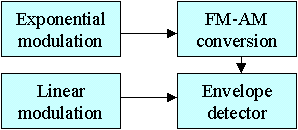
S-72.423 Telecommunication Systems
Fall 2002
(last update: 27.9.2002)
GUIDE FOR LECTURE DIARIES
General
Writing lecture diary
Contents
Discuss what were the essential elements of this
lecture? (Do not copy lecturing slides but use your own words!) Use many
figures! You may use Mind Mapping chart to show the logical connections
of the lecture topics.
Motivation
Discuss why these concepts and this information
is important for science, society and you. Suggest if the studying of this
topic could be made more fruitful.
Understanding
Give a critical point of view of a single lecturing
topic: How this could be applied, why it should be applied! Discuss what
you could not comprehend! How this lecturing topic could be illustrated?
Applications
What is a consequence of this topic with respect
of applications? Where and how this topic is applied?
Guide for grading of lecture diaries
Each student participating to the lecture diary - module of this course must grade at least eight lecture diaries. One should read the lecture diary carefully through and justify if it covers the four key points explained in " GUIDE FOR WRITING A LECTURE DIARY "-section.
In your grading you must
LECTURE DIARY 12.9.2002 (example)
Mathew Matts (don't include your student number)
Lecture topic: Exponential Modulation (lecture 2)
Contents: This
lecture discussed about exponential modulation that is used for instance
in FM-radios. In analysis of FM we noticed that it can not be analyzed
as simply as linear modulation techniques. Therefore one must use a set
of special cases to find out how it works. This is done gradually such
that first narrow band modulation is discussed and then wideband modulation
with tones and finally wideband modulation with arbitrary modulation signal.
This was used also to determine the required bandwidth. Detection of FM
was discussed. It was interesting to note that FM and AM detection carries
some similarities as shown in the figure below:

Motivation: Considering EM is important for two reasons. First is gives a set of ideas to analyze non-linear systems. One can see that their analysis is not necessary more difficult than analyzing linear systems but one needs to have a grip how problems can be simplified or to extract the essential elements. Secondly, analyzing EM forms basics to understand phase shift keying modulation, for instance its spectral presentations.
Understanding: In this lecture understanding of FM-AM conversion was interesting. It is a handy way to convert phase changes to amplitude changes for detection. One must use limiters to cut-out channel introduced amplitude distortion. Also channel may introduce FM-AM conversion that is alleviated by equalizer. Therefore, this is an interesting topic having many applications. Also software radio was discussed that I got so interested that I went to the Web and found an interesting article (http://www.nml.org/n_1999-3.htm). Only a brief look revealed that the introduction of A/D conversion can change receiver structure a great deal. However, signal properties are still the same - only their processing is now based on making DSP-based calculations. I wonder if there exists any simulation tools that can be used to study software radios more closely?
Applications:
EM is used because it can dramatically improve post detection SNR still
this is paid by increased transmission bandwidth. EM is applied in analog
radios and in TVs sound channel. Various phase modulation techniques as
QPSK and M-PSK are a form of EM. GSM - system applies Gaussian Shift Keying
that is a filtered phase modulation technique having narrow bandwidth and
smooth envelope. In the web page I found that in modern digital systems, as in satellite or in cellular
communications, M-level EM is practically always combined to efficient
channel coding as Turbo-coding or concatenated coding.